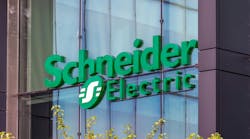New IEEE Standard on LED Flicker Provokes Opposition from Lighting Manufacturer
The Institute of Electrical and Electronics Engineers (IEEE), New York, recently published a new recommended practice regarding flicker in lighting systems and provoked a formal challenge from lighting manufacturer Once Inc., Plymouth, Minn., as well as a separate position paper from the National Electrical Manufacturers Association (NEMA) calling for further development of measurements and guidelines relating to flicker in LED lighting.
At issue is the question of how fluctuations in luminance and spectral distribution from a light source are perceived by human eyes as unwanted flicker and stroboscopic effects, and how those effects, called temporal light artifacts (TLAs) in the NEMA position paper, should be considered when selecting and installing lighting systems.
In the newly introduced standard, IEEE 1789-2015, “Recommended Practice for Modulating Current in High-Brightness LEDs for Mitigating Health Risks to Viewers,” the IEEE committee chose a strict interpretation of research on the effects of flicker in terms of health, performance and safety in an effort to define parameters within which the lighting system fluctuations will have no perceived flicker or stroboscopic effect.
The parameters laid down in IEEE 1789-2015 didn’t sit well with Zdenko Grajcar, CEO of Once Inc., which specializes in lighting niches such as agricultural applications. Grajcar said in a press release this week that the new standard fails to account for the performance of AC step driver technologies and their impact on TLA. Grajcar said in the release that he sat on the IEEE 1789 working committee and raised concerns about the standard that were ignored. Once said it has since taken its concerns to IEEE management but received no action.
“If implemented for all lighting products, IEEE 1789 would not only eliminate LED line-voltage technologies but also standard incandescent lamps and majority of HPS lighting as a high risk as a high health risk lighting. That is not a mistake, according to the IEEE 1789 standard, incandescent lamps we have been using for past century are highly dangerous to your health,” Grajcar said in the release.
NEMA’s position paper proposes that in its effort to address the effects of TLA on health, performance and safety, the IEEE committee put some suitable technologies out of reach for certain applications. “IEEE P1789’s proposed limits may avoid any chance of health or distraction effects, but appear to be overly strict for many applications, which could add unnecessary cost to the electronics in LED (light-emitting diode) products.”
NEMA however carefully points to a lack of adequate measurements for flicker and stroboscopic effects as the core trouble in developing standards to deal with them, rather than any suggestion of bias on the part of the committee.
“Current TLA standardization is unfortunately hampered by lack of adequate TLA assessment metrics. The currently applied metrics, Modulation Depth (also called Flicker Percentage) and Flicker Index, do not quantify TLA correctly because they do not fully account for the effects of both the frequency and the wave-shape of the light stimulus,” said the NEMA position paper.
“The human eye is sensitive to both wave-shape and frequency effects and a metric or specification that does not allow for them will be too strict for some cases and/or too lax for others. Therefore, new flicker metrics and associated measurement methods for lighting are required.”
NEMA pointed out that efforts to develop new metrics for TLA are underway at the International Electrotechnical Commission (IEC) and the Commission Internationale d’Eclairage (CIE), and that NEMA recently launched its own effort to develop a TLA measurement standard for lighting, including test procedures and performance limits.
“NEMA recommends that regulatory bodies refrain from creating TLA measurement specifications or including performance limits in their regulations until this standards development effort is concluded,” it said.


